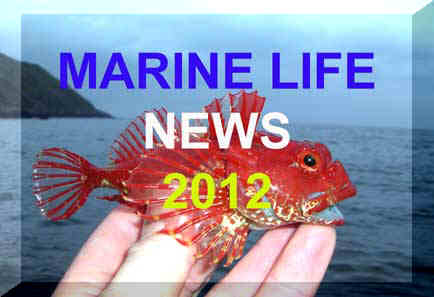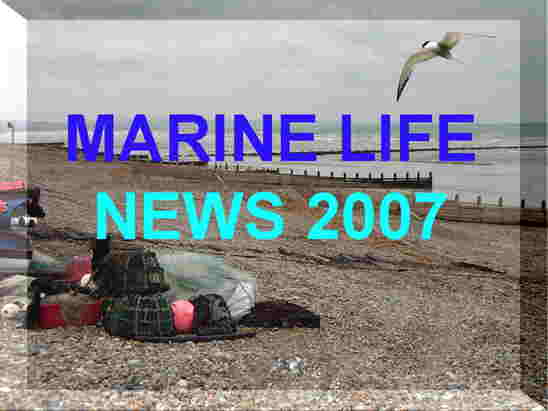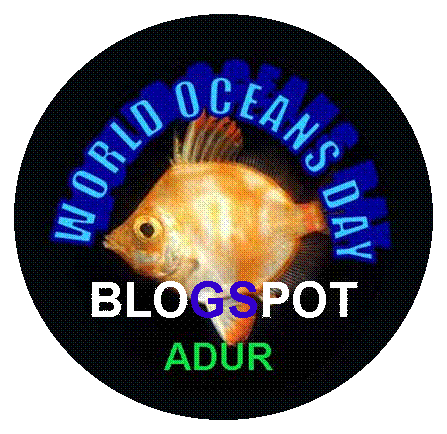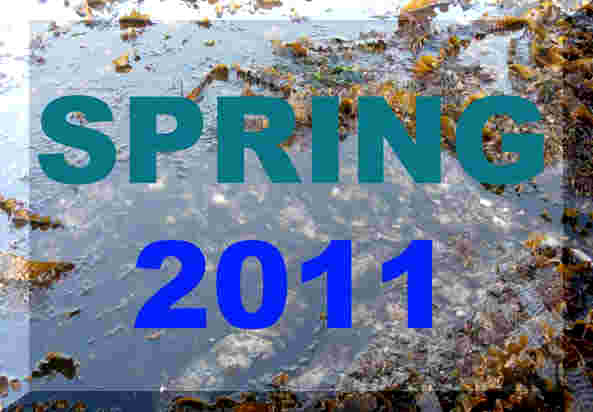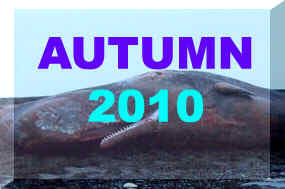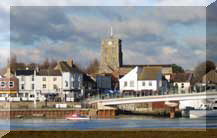EVENTS:
24
November 2011
Cornwall
Wildlife Trust’s Marine Strandings Network (MSN)
Annual
Conference Report
 WhaleFest
2011
WhaleFest
2011
5-6
November 2011
The
first and largest event of its kind in Europe, WhaleFest
– a celebration of the public's passion for whales and dolphins – will
open for the weekend of 5th and 6th November
2011 in Brighton, UK.
WhaleFest
was organised by Planet
Whale, the world's largest online search engine for whale and dolphin
watching trips. WhaleFest represents Planet Whale's vision; to provide
whale and dolphin conservation organisations and sustainable whale watching
businesses with a free platform to promote their work to the widest possible
audience.
How
to book
Go
to WhaleFest web page
(click
on this text)
LATEST
NEWS:
31
December 2011
An
incomplete fossilised starfish Crateraster
quinqueloba was discovered underneath
the Seaford
Chalk in cliffs at Beachy
Head, Sussex. This is one of the most common chalk starfish, but articulated
specimens of this sort are pretty scarce.
Click
on the image for more information
|
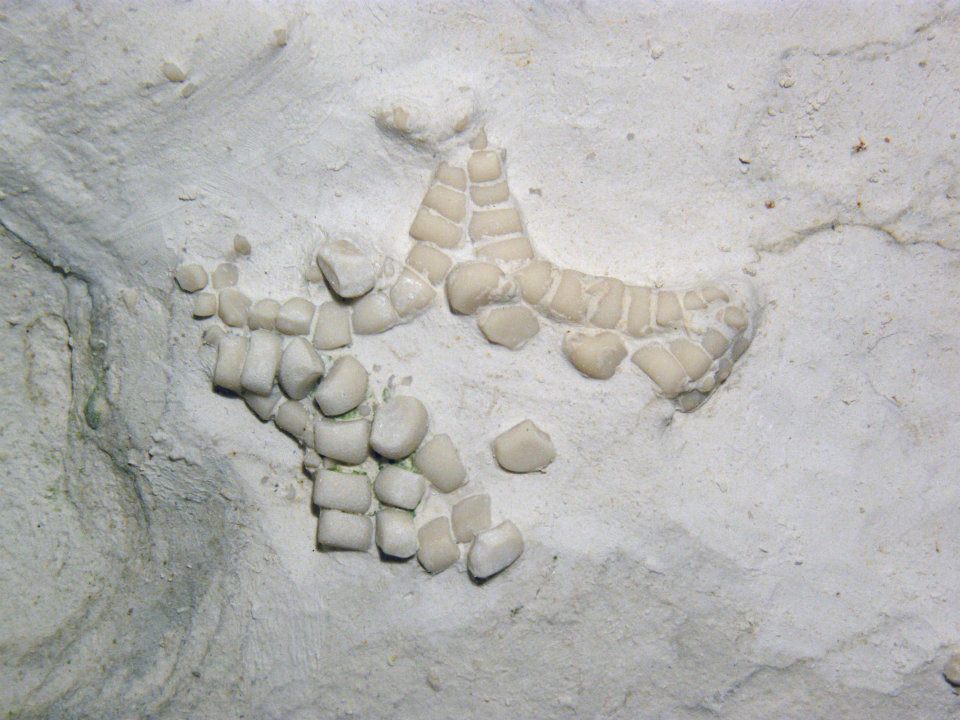 |
30
December 2011
An
adolescent Minke
Whale, Balaenoptera acutorostrata,
washed up dead after the gales in Epple
Bay, Birchington-on-Sea,
on the north Kent coast. Following a post mortem, Jon
Brooks, a marine mammal medic and East
Kent co-ordinator of the British Divers
Marine Life Rescue, said: “The cause of
death has been put as combination of dehydration, starvation and parasitic
infestation in intestines and all three stomachs.
The
whale was in reasonable condition but hadn’t eaten for some time – there
was no food in the gut, which also showed a heavy parasite burden.”
There is a resident population of Minke Whales
in the North Sea.
BMLSS
Cetaceans
29
December 2011
A
young Kemp's Ridley Turtle,
Lepidochelys
kempii, was discovered on the shore
at Tresilian
Bay, near Llantwit
Major, on the south Wales coast. This was the first of these young
turtles
discovered dead after the gales. These endangered
turtles breed on the coasts of Mexico and are usually found in the Gulf
of Mexico and were thought to have blown across the Atlantic Ocean.
The turtle is likely to have perished in the cold seas.
Second
Report
BMLSS
Turtles
27
December 2011
A
Bearded Seal, Erignathus
barbatus, hauled out on a dock at Tayport
(on the south coast of the Firth
of Tay, near Dundee), east Scotland. Its arrival followed a spate of
storms
across Scotland.
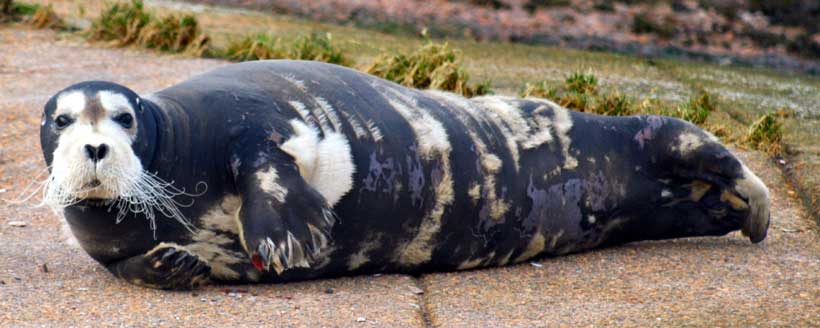
A Bearded
Seal was also seen at St.
Cyrus
(near Aberdeen) about 30 miles further north in November
2011. In view of the rare sightings of this
Arctic seal around the British Isles it is likely to be the same one.
Bearded
Seals are normally
found all along the European, Asiatic and North American coasts of the
Arctic Ocean. Its food consists entirely of bottom-living animals including
shrimps, crabs, clams, whelks and bottom fish such as flounder. It is a
very unusual seal to be found in the waters around Scotland.
Previous
Report 2008
BMLSS
Seals
Seals
in Scotland (Identification)
24
December 2011

Sperm
Whale stranded dead at Hunstanton
Photograph
by Sara Evans
An
16.7 metre adult Sperm Whale,
Physeter
macrocephalus,
was washed up dead on Hunstanton
Beach, Norfolk. It attracted numerous sightseers over the Christmas
holiday.
BMLSS
Cetaceans
20
December 2011
A
Hooded Seal, Cystophora
cristata, was discovered on
the beach at Chapel
St. Leonards,
Lincolnshire, was taken to the Skegness
Natureland Seal Sanctuary. The explanation for this unexpected arrival
may be because the seal had first been rescued by a Seal
Sanctuary at Friedrichskoog in Germany in August.
2011 and was fitted with a radio
transmitter on its release. The eight month old pup was thin and exhausted
after swimming all the way to Scotland and up to the Orkney
Islands. If she had kept going she would have been on course to get
home to Iceland. Unfortunately she turned round and headed south along
the east coast of England and came to rest in Lincolnshire.
The
Hooded
Seal is an Arctic
species and even discoveries off the coast of Scotland, including the Orkney
and Shetland Isles are rare. It congregates to breed around Greenland and
the Denmark Strait
(between Iceland and Greenland) from June to August. For the rest of the
year it tends to be a solitary animal.
Skegness
Natureland Sea Sanctuary News
Previous
Report 2004
BMLSS
Seals
15
December 2011
An
interesting large piece of wood was washed up on the strandline
at after storms on low tide at Sennen
Cove, Cornwall: it was completely covered in small to medium sized
Goose
Barnacles,
Lepas anatifera.
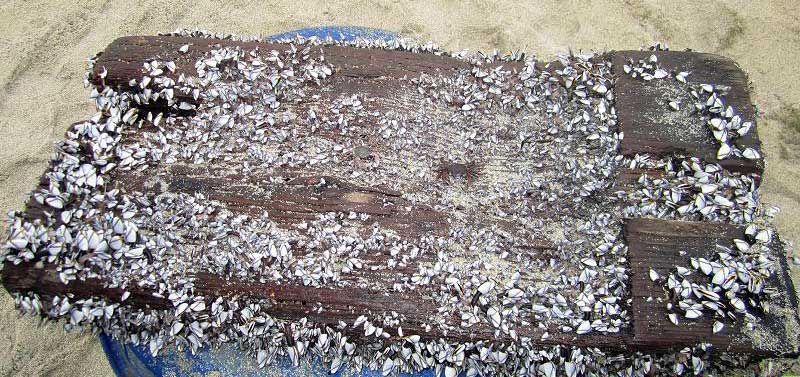
On
closer examination it was found to have a cavity at one end and tucked
into this was a male and a female Columbus
Crab,
Planes minutus. Small
3-4 mm egg masses and shipworm
holes were also seen which included the rarely recorded Bankia
gouldi; as
well as Teredora
malleolus, which
made up about 95% of the shipworms in the timber. Under a magnifying glass
and discovered a rare 14 mm pelagic
sea
slug, Fiona
pinnata,
which has only been recorded
a few times in British seas.
Full
Report
BMLSS
Barnacles
BMLSS
Molluscs
BMLSS
Nudibranchs
BMLSS
Strandline Reports
13
December 2011
A
Green Turtle, Chelonia
mydas, was discovered on a beach in
South
Ronaldsay,
Orkney
Islands, (ND 463 900)
after the recent storms. Unfortunately it was freshly dead, but intact,
so its remains were sent to Scottish
Agricultural College Veterinary Laboratory at Inverness. The carapace
measured 290 mm long by 280 mm wide.
The
Green
Turtle inhabits tropical seas including the
Atlantic coast of Spain and the Mediterranean Sea. This turtle is only
very rarely recorded in British seas.
|
 |
Previous
Report in 2003
BMLSS
Turtles
12
December 2011
A
Humpback
Whale, Megaptera novaeangliae,
was
videod
off Sumburgh Head,
the most southerly part of the Shetland Islands.
1
December 2011
The
invasive alien Carpet Sea Squirt, Didemnum
vexillum, has new been discovered
on the shore in Kent. This colonial
ascidian is an invasive
and unattractive smothering species from the Pacific Ocean off Japan. It
has occasionally been recorded in harbours but this is the first time it
has spread to adjoining areas around England.
BMLSS
Tunicates
A
gastropod
mollusc
new to science, a pretty little false cowrie in the family Ovulidae,
Simnia
hiscocki,
was described from the Cornwall Peninsula, England, and compared with Simnia
patula occurring in the same area,
from which it differs in shell- and radula-morphological features as well
as ecological features. DNA analysis suggests that it is a very young species
whose host-specificity to the Pink Sea
Fan, Eunicella
verrucosa, makes it a potentially
useful species for monitoring sea-temperature-change.
BMLSS
Molluscs
BMLSS
Simnia
23
November 2011
An
extremely rare record of a Yellowfin Tuna,
Thunnus
albacares, was discovered and photographed
by Nigel Jones
at the foot of a cliff at Dunraven
Bay, near Porthcawl,
South Wales. The fish was identified from the photographs. It
was only the third discovery on record from British seas.
Photograph
by Nigel Jones
BMLSS
Tunnies
|
 |
An
unprecedented pod of over seventy Bottle-nosed
Dolphins, Tursiops truncatus, swam
and leapt around David Lambert's
fishing boat, 12 miles off Brighton,
East
Sussex. This world not be exceptionally
newsworthy to the south and west of the British Isles, but off Sussex this
is an unusual sighting, even more so during winter.
BMLSS
Cetaceans
Whales
& Dolphins in British Seas
Marine
Life Reports (Sussex)
9 November
2011
A
White-beaked
Dolphin, Lagenorhyncus albirostris,
was observed by surveyors
bow-riding
their vessel about 15 miles south of Worthing,
West Sussex. We had a small group of White-beaked
Dolphins sighted some miles off shore between
Eastbourne
and Dieppe
back in April
this year. This species often bow-rides so it is interesting that both
local sightings of these dolphins were bowriding. This
species is not normally recorded in the English Channel.
7
November 2011
The
European Union (European
Commission on Fisheries) officially extended measures to protect threatened
Porbeagle
Sharks, Lamna
nasus,
from fishing. Under the amended Regulation, fishing for Porbeagles is now
prohibited in all EU waters, including the Mediterranean Sea, and by EU
vessels fishing in international waters. In addition, if Porbeagles are
caught accidentally, they must now be released immediately.
 CITES
Protection Vote 2010
CITES
Protection Vote 2010
BMLSS
Sharks
23
October 2011
A
Blue
Shark, Prionace
glauca, was washed up on Camber
Sands, East Sussex. This species is rarely
this far east up the English Channel.
BMLSS
Sharks
15
October 2011
A
record rod and line caught Almaco
Jack, Seriola
rivoliana,
was
landed by angler Brent
Hanley on a mark near Hanois,
Guernsey, the fish weighed 1 lb 14 oz 3 drm (= 856 grams)
and this beats the previous best for the species by nearly 7oz:
a record set by C.Torode
off Grandes Rocques, back in 2007
with a fish of 1 lb 7 oz 12 drm. It was caught on a bait
of Sand-eels. This
particular was damaged and was only identified by its gill rakers.

Almaco
Jack
Photograph
by Richard
Lord (Guernsey)
All
Rights Reserved © RLLord
Sealord
Photography
This
Caribbean fish is rarely recorded in British seas.
Detailed
Report
The
2007
specimen was identified incorrectly.
BMLSS
Seriola Jacks
12
October 2011
An
17 metre long Sperm Whale,
Physeter
macrocephalus,
was spotted in Kirkwall
Bay in the Orkney Isles.
There were the usual fears that the deep water whale was sick and may become
stranded on the shore. At 1:00 pm
the whale was seen swimming into deeper water.
 8
October 2011
8
October 2011
The
Snakelocks
Anemone Shrimp, Periclimenes
sagittifer, has now been discovered in Babbacombe
Bay, south Devon. This shrimp is symbiotic
with
the Snakelocks Anemone,
Anemonia
viridis.
They
were first discovered around
mainland Britain under Swanage
Pier
in 2007. Before
this report, the most northerly sightings were regular reports from around
the Channel
Islands.
8
October 2011
Dr
Peter Evans, Director of the marine research
charity Sea Watch
Foundation, confirmed that a small whale spotted in Mounts
Bay next to the Cornish town of Penzance
was a Dwarf Sperm Whale,
Kogia
sima, a tropical/subtropical species
that has never before been recorded off the UK coast. This
is the smallest whale in the oceans, little more than the size of a Porpoise.
Images
I
found three Portuguese Man-o'-War, Physalia
physalis, loads of By-the-Wind Sailors, Velella
velella,
Buoy
Barnacles,
Dosima fascicularis, and
Goose
Barnacles, Lepas anatifera, at Sennen
Cove and
Gwynver
Beach, Cornwall.
Image
by Paul Semmens
BMLSS
Jellyfish
BMLSS
Strandline Page
BMLSS
Barnacles
BMLSS
Cetaceans
7 October
2011
A
juvenile Short-snouted
Seahorse,
Hippocampus
hippocampus, was discovered in the
River
Thames at Greenwich.
This
discovery suggests a breeding population.
BMLSS
Seahorses
4
October 2011
A
rare Sei Whale, Balaenoptera borealis,
that became stranded on a South
Uist beach near Gerinish, Outer
Hebrides, was out of the water too long and eventually it died. The
deep water whale was about 17 metres long.
BMLSS
Cetaceans
Whales
& Dolphins in British Seas
2 October
2011
A
pelagic string siphonophore
(miniature jellyfish-like animal), probably
the Agalma
elegans,
was seen at Evie
Bay, Orkney Islands,
Scotland. This particular species occurs sporadically
around the British coast, usually some distance offshore.
This
pelagic hydrozoan is rarely recorded rather than rare.

British
Marine Life News 2010
Cornish
Marine Life Records 2009 (Ray Dennis Records)
BMLSS
Oil Disasters page



